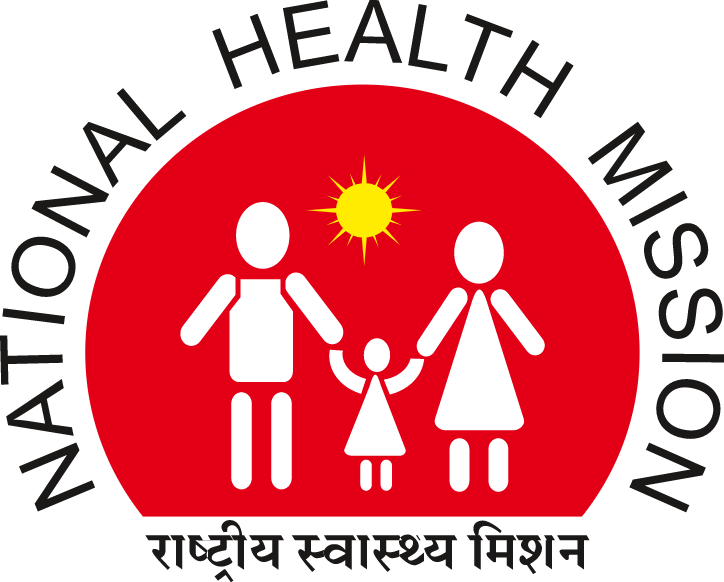About Mission
Sickle cell disease is a genetic blood disease which affects the whole life of affected patient. It is more common in the tribal population of India, but occurs in non tribals too. It not only causes anemia but also pain crises, reduced growth, and affects many organs like lungs, heart, kidney, eyes, bones and the brain. India has the largest density of tribal population, globally. As per Census 2011, India has an 8.6% tribal population which is 67.8 million across the Indian states. The MoHFW tribal health expert committee report has listed sickle cell disease as one of the 10 special problems in tribal heath that affect the tribal people disproportionately, thus making this an important intervention. Ministry of health under NHM initiated the work on hemoglobinopathies (Thalassemia & Sickle Cell Disease) in 2016 wherein comprehensive guidelines on prevention and management of heamoglobinopathies were released and provision of funds towards screening and management of Sickle cell disease were made. Thereafter, as per the State’s proposals, support is continuously being provided. However, the pandemic reduced the efforts towards prevention through screening and IEC activities. Now, it is felt that a separate scheme/Mission to detect, management, prevention and awareness needs to be initiated.
- Mission: To improve care of all Sickle Cell Disease patients for their better future and to lower the prevalence of the disease through multi-faced coordinated approach towards screening and awareness strategies
- Vision: Eliminate sickle cell disease as a public health problem in India before 2047 there is need for increasing the awareness about the disease in the community, implementation of mass screening activities for early identification, building a strong network of diagnosis and linkages, implementing robust monitoring system, strengthening the existing primary health care mechanism to incorporate SCD related strategies, capacity building of primary, secondary and tertiary health care teams and building cost-effective intensive interventions at higher care facilities.
The overall aim is to enable access to affordable and quality health care to all SCD patients, and to lower the prevalence through awareness, change of practices and screening interventions.
Objectives of the Mission:
- Provision of affordable and accessible care to all SCD patients
- To ensure quality of care for SCD patients
- To reduce the prevalence of SCD
These objectives would be attained through strategies spanning awareness generation, strengthening of screening and testing facilities, strengthening of laboratory services for diagnosis, facilitation of management & treatment, establishing linkages across level of care, inter sectoral convergence towards holistic approach and linkages with social security schemes/benefit packages. Strategy: The strategy emphasizes on THREE pillars:
- Health promotion- Awareness generation & pre-marital genetic counselling
- Prevention: Universal screening and early detection
- Holistic Management & continuum of care-
- Management of persons with sickle cell disease at primary, secondary and tertiary health care levels; treatment facilities at tertiary health care facilities
- Patient support system
- Community adoption
Beneficiaries: The program shall be carried out in a mission mode covering the entire population from zero to 18 years of age and shall incrementally include the entire population up to 40 years as a part of National Health Mission and shall focus on universal population-based screening, prevention, and management of sickle cell anemia in all tribal and other high prevalent areas States/UTs of India. While in its initial stage, the mission would prioritize its intervention in high prevalence and tribal states/UT, the plan would subsequently expand to include all states/UTs in a phase-wise manner with an incremental approach. The mission aims to cover 7 crore people with screening, counselling for prevention and care for people with SCD in three and half years.
Initially, the focus shall be on 17 states with higher prevalence of SCD viz., Gujarat, Maharashtra, Rajasthan, Madhya Pradesh, Jharkhand, Chhattisgarh, West Bengal, Odisha, Tamil Nadu, Telangana, Andhra Pradesh, Karnataka, Assam, Uttar Pradesh, Kerala, Bihar and Uttarakhand. The programme would be in integration with existing mechanism and strategies under NHM to ensure utilization of existing resources and also minimizing the duplication of efforts. For example, established platform of RBSK and Pradhan Mantri Surakshit Matritva Abhiyan (PMSMA) would be leveraged to achieve the targets for the Sickle Cell mission.
PRIMARY Prevention –
- Awareness Generation & Premarital Counselling
- At INDIVIDUAL/Household level- Individuals with known or detected SCDs would also be encouraged to register on Sickle Cell Disease Support Corner, to bridge the gap between patients and health care services in tribal areas.
- At Community level: Platforms such as monthly Village Health Sanitation and Nutrition Committee (VHSNC)/ Mahila Arogya Samiti (MAS) meetings, Village/Urban Health Sanitation and Nutrition Days (V/UHSND) meetings at Anganwadis, Jan Arogya Samitis in AB-HWC, Arogya Sabha, Self-Help Groups (SHG), youth clubs, parent-teachers meetings in schools, etc., shall be leveraged to sensitize people on the importance of sickle cell disease and screening service available at AB-HWCs.
- Patients Support Groups (PSG)-facilitated by the MPWs/ASHA or other frontline workers to improve treatment compliance and engaging not only those with the disease condition but also family members or care givers.
- Mechanisms to be established at community level for pre-marital and pre-conception screening backed by genetic counselling services. Also, at the level of community, for all individuals detected or known as carrier or patients, extended family screening is to be ensured.
- At Schools: In all blocks with sickle cell disease, Community Health Officers (CHO) at Sub Health Centre – Health and Wellness Centre (SHC-HWC) and Medical Officer at Primary Health Centre – Health and Wellness Centre (PHC-HWC) shall conduct talk sessions and counselling at all schools & colleges including ‘schools tribal residential schools, tribal hostels and Ekalvya Model Residential Schools, for early detection of SCD among school going children.AB-Health and Wellness ambassadors would also be trained information in form of interesting activities which would be either classroom based or as an outreach. o Eklavya Model Residential School (EMRS), one of the flagship initiatives of GoI, would be utilized as a platform to undertake and ensure all SCD related interventions at this level.
- At Health Care Facility Level: Counsellors at the primary health care centres will be primarily responsible for providing counselling services to all individuals diagnosed positive with Sickle cell Anemia.
- IEC and Mass media: The Health Promotion strategy recommended by the National Health Policy 2017 emphasizes institutionalizing intersectoral coordination at national and sub-national levels to optimize health outcomes, through constitution of bodies that have representation from relevant non-health ministries. This should be in line with the emergent “Health in All” approach as complement to Health for All, and thus making the base for all planned IEC/BCC activities under this programme,Ministry of Tribal Affairs will play the pivotal role in awareness generation. The mentees and mentors of GOAL (Going Online as Leaders) program run by the MOTA with Facebook will be used as ambassadors for generating awareness on health issues including Sickle cell disease
- Engagement of CBOs/NGOs: NGOs working in the area in the sector of health especially tribal health shall also be utilized for the purpose of mobilization, awareness and providing pre-marital and prenatal screening and counselling services. The NGO involvement framework under NHM may also be referred while engaging with an NGO in these areas.



